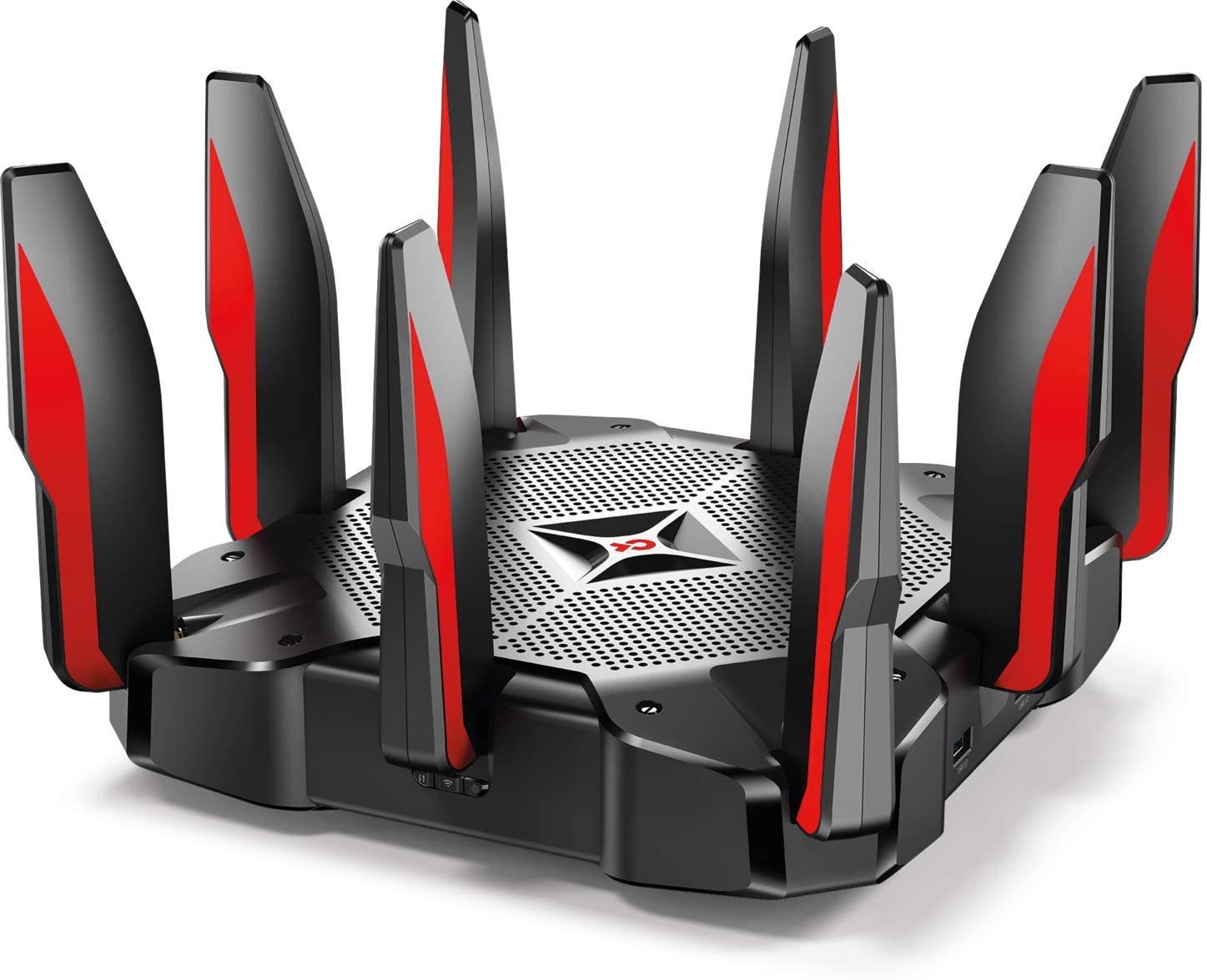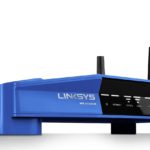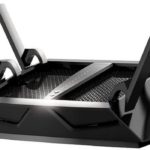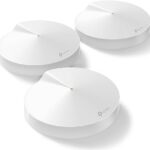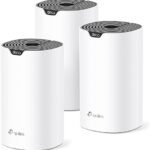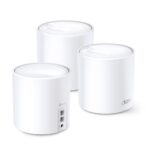The Wi-Fi routers are said to be Single-Band, Dual-Band, and Tri-Band Wi-Fi Routers based on the number of frequency band they use for wireless communications. A frequency band refers to a particular frequency range within which signals can be sent. WLAN waves can be transmitted via the two frequency bands 2.4 GHz and 5 GHz.
The latest WiFi routers are faster and more versatile than ever, offering many powerful new features. One important feature makes it possible for the router to send data over two different radio frequencies or “bands”: the 2.4 GHz band and the 5 GHz band. It’s these different frequencies that separate a single-band router from a dual-band, and makes tri-band routers distinct from both.
Some Bestseller Single-Band Routers:
Paid link:
Some Bestseller Dual-Band Routers:
Paid link:
Some Bestseller Tri-Band Routers:
Paid link:
You may read: 5 Best Whole Home & Mesh Wi-Fi Systems

|
Single-Band, Dual-Band, and Tri-Band Wi-Fi Routers |
What are the frequency bands for the WiFi routers?
Wireless waves from WiFi routers can be transmitted via the two frequency bands 2.4 GHz and 5 GHz. These differ in speed and distance. In short, the 2.4 GHz network radiates farther but is slower, while the 5 GHz network is faster but does not reach so far.
2.4 GHz frequency band for WiFi routers:
Let’s start with the 2.4 GHz frequency band. When the first WiFi routers were released, this was the only frequency they used to send and receive data. One of the advantages of the 2.4 GHz frequency is that it can transmit a strong signal over a fairly large area in your home. It is also good at penetrating solid objects in your home, like walls and floors. Overall, this allows you to maintain a strong WiFi connection as you move further away from your router.
One downside of the 2.4 GHz frequency is that it has become more and more crowded. As a result, in addition to interference from other WiFi routers located nearby, your 2.4 GHz WiFi network can experience interference from many common household devices. These include microwave ovens, cordless phones, wireless speakers, Bluetooth devices and baby monitors. And when your network is experiencing interference from these nearby devices, your speed and overall performance suffer.
Another downside is that the maximum speeds offered by 2.4 GHz networks are theoretically up to 800 Mbps, but typically lesser than this in practice. If there are multiple users trying to perform certain high-bandwidth activities at the same time – streaming HD video for example – then the 2.4 GHz band will likely not be fast enough.
5 GHz frequency band for WiFi routers:
To provide faster speeds, and limit the impact of interference from other devices, manufacturers added support for the 5 GHz frequency in the latest generation of WiFi routers. With two frequencies (bands) available, these dual-band routers can handle much more traffic. What’s more, the 5 GHz band supports speeds that are four times faster than the 2.4 GHz frequency, so devices and applications that use the most bandwidth generally perform better on the 5 GHz frequency. The 5 GHz band also has many more channels than the 2.4 GHz band which reduces interference from other devices.
Like the 2.4 GHz frequency, the 5 GHz frequency has some drawbacks. In general, it can’t broadcast its WiFi signal as far as the 2.4 GHz frequency and it is not as good at penetrating the walls and floors within your home.
You may read: 5 Best Gigabit Cable Modem/Router Combos (DOCSIS 3.1)
Different types of Wi-Fi Routers based on frequency bands:
Single-Band Routers:
Single-band router uses the 2.4GHz band and is limited to one wireless signal. A single-band router is limited to, as you might’ve guessed, just one frequency band—the 2.4 GHz frequency band, to be exact. Older, single-band routers operate on the 802.11g standard (introduced in 2003), which caps data speeds at 54 Mbps.
More likely, though, a single-band router operates on the (somewhat) newer 802.11n standard, also known as “Wireless-N.” Wireless-N routers on a 2.4 GHz band offer theoretical speeds of up to 800 Mbps, but typically lesser than this in practice.
Though single-band, 2.4 GHz routers are accessible and low-priced, they come with a fair share of drawbacks, given the natural progression of Wi-Fi tech. It breaks down something like this:
Single-Band Wi-Fi Router Pros:
- Low purchase price
- Compatibility with almost all devices, as multi-band devices typically support 2.4 GHz connections (but not vice versa)
- Lower frequency is better at penetrating obstacles such as walls, doors, furniture, etc.
Single-Band Wi-Fi Router Cons:
- Lower maximum speeds than multi-band alternatives
- Given the age and ubiquity of 2.4 GHz devices, you’ll likely experience lots of signal interference, which can reduce Wi-Fi speed and stability
- Single-band routers won’t include modern features, like app-based monitoring or device prioritization
Some Bestseller Single-Band Routers:
Paid link:
Dual-Band Routers:
Dual-band router uses two bands: 2.4GHz and 5GHz, which means that they transmit two simultaneous wireless signals, providing a better performance, and compared to a single-band router, a dual-band router is easier to set up.
Dual band WiFi routers support both the 2.4 GHz Wireless-N standard and 5 GHz frequency band, operating on the newer 802.11ac standard. At their theoretical best, that means they support aggregate speeds up to 2,167 Mbps or more.
Dual-band router is significantly more expensive than a single-band router, sometimes two to three times the price of a single-band router Therefore, optimizing your network speed or saving the cost will depend on the Wi-Fi router.
Dual-Band Wi-Fi Router Pros:
- Being the current market standard, dual-band routers might surpass their single-band cousins in cost, but they still sport entry-level prices
- With more modern hardware, dual-band routers offer more range and stability than singe-band routers
- Compatibility with recent 5 GHz-friendly devices
- Twice the bandwidth of single-band routers (or more)
Dual-Band Wi-Fi Router Cons:
- Though you’re much more likely to experience interference on the 2.4 GHz band, the 5 GHz band will continue to become more populated over time
- Speeds are impacted by the amount of connected devices using Wi-Fi at once
- 5 GHz has a shorter range than 2.4 GHz in environments with lots of obstacles such as walls, doors, furniture, etc.
Some Bestseller Dual-Band Routers:
Paid link:
Tri-Band Routers:
A tri-band router is hosting an older 2.4 GHz network as well as two separate 5 GHz networks and automatically dividing up your devices between them. With two radio freeways for your 5 GHz data to travel on, tri-band routers reduce signal interference even more than dual-band devices.
If you have a lot of devices heavily using the Wi-Fi, a tri-band router could speed things up by preventing all those devices from interfering with each other. On the other hand, if you’re not in the habit of using your connection heavily by multiple devices at the same time, you won’t really notice a difference.
Tri-Band Routers Pros:
- More connected devices are less likely to negatively affect Wi-Fi speeds
- Three separate Wi-Fi bands means three times the bandwidth
- You can dedicate each band to devices in the home or office
- More bands equals less interference
- High CPU speeds make faster file transfers and smoother handling of multiple Wi-Fi-connected devices
Tri-Band Routers Cons:
- Significantly higher cost than dual-band models
- If you don’t have a lot of 5 GHz-compatible Wi-Fi devices, the upgrade might not be too noticeable
Some Bestseller Tri-Band Routers:
Paid link:
View Cox Internet Plans
Check Xfinity Internet Plans
Disclosure: As an Amazon Associate I earn from qualifying purchases.
Hello Friends! If you have any doubts about this post for the Difference between Single-Band, Dual-Band, and Tri-Band Wi-Fi Routers, please let me know through a comment below and if you like this post useful, please do a share on Facebook or Twitter to your friends, so that it may be useful for them also.

